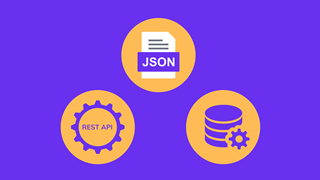In the ever-evolving landscape of technology, composability has emerged as a guiding principle for building adaptable, scalable, and future-proof systems. However, businesses inevitably face challenges as they strive to harness the benefits of composability.
These challenges, from interoperability issues to architectural complexities, demand strategic solutions. Among these solutions, standardization stands out as a beacon of hope, enabling businesses to overcome obstacles and unlock the true potential of composability.
The Road to Composability: A Journey Filled with Challenges
Composability promises a world where modular components seamlessly integrate to create flexible and tailored solutions. However, realizing this vision requires more than just a lofty aspiration. Challenges abound, from ensuring different systems communicate effectively to architecting cohesive solutions. As we tread this path, we must address these challenges head-on to harness the full power of composability.
The Power of Standardization
Amid the complexities of composability, standardization emerges as a formidable ally. It provides a structured framework that guides the integration of disparate components. Standardization facilitates efficient communication, uniform data formats, and streamlined processes, all essential for creating a well-functioning composability ecosystem.
From Chaos to Order: Data Format Standardization
One of the significant strides in standardization lies in data formats. JSON, a universal low-level data format, has become a staple across systems. This standardization has simplified data exchange and processing, allowing different components to seamlessly understand and interact with each other. This data format alignment streamlines development efforts and enhances interoperability.
Unified Communication: API Standardization
The rise of well-defined REST APIs and GraphQL exemplifies the power of standardization. These protocols provide a common language for systems to communicate effectively. By adhering to these standardized communication methods, businesses can facilitate smoother interaction between components, enabling them to share data and functionalities seamlessly.
Piecing It Together: Component Standardization
As the journey of composability progresses, systems start to fall into distinct categories or "buckets." Within these segments, such as Content Management Systems (CMS), commerce, and search, organizations are witnessing the benefits of standardized interfaces. This approach simplifies integration challenges within each segment, allowing architects to focus on optimizing the connections between them.
Accelerating Integration: Package Standardization
Enterprises are embracing the concept of package standardization, where system integrators curate pre-configured solutions for specific business problems. These packages, comprised of well-matched, standardized components, provide businesses with a plug-and-play approach. This accelerates the integration process, enabling organizations to efficiently leverage composability to solve vertical business problems.
The Role of Internal Standards
Beyond external standardization, establishing internal standards within organizations plays a crucial role. This involves defining consistent approaches for solving problems across different systems and departments. Whether it's naming conventions, API usage guidelines, or integration methodologies, internal standards ensure a harmonious integration landscape, making it easier to swap out components or comprehend existing solutions.
The Bridge to a Composable Future
The challenges of composability are real and intricate, but they are not insurmountable. Standardization emerges as a potent tool, guiding organizations through integration complexities. From data formats to API protocols and component bundles, standardization simplifies communication, accelerates integration, and fosters a cohesive ecosystem of modular components. As businesses continue to navigate the path of composability, they must embrace standardization as a fundamental strategy, transforming challenges into opportunities and building a future where agility and innovation reign supreme. By doing so, they embark on a journey towards a composable world that is as powerful as harmonious.




